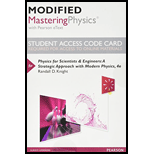
48. A
purpose is to extract heat from a cold reservoir. The same engine
running backward is called a heat pump if its purpose is to ex-
haust warm air into the hot reservoir. Heat pumps are widely used
for home heating. You can think of a heat pump as a refrigera-
tor that is cooling the already cold outdoors and, with its exhaust
heat QH, warming the indoors. Perhaps this seems a little silly, but
consider the following. Electricity can be directly used to heat a
home by passing an
is a direct, 100% conversion of work to heat. That is, 15 kW of
electric power (generated by doing work at the rate of 15 kJ/s at
the power plant) produces heat energy inside the home at a rate of
15 kJ/s. Suppose that the neighbor's home has a heat pump with
a coefficient of performance of 5.0, a realistic value. Note that
"what you get" with a heat pump is heat delivered, QH, so a heat
pump's coefficient of performance is defined as K = QH/ Win.
a. How much electric power (in kW) does the heat pump use to
deliver 15 kJ/s of heat energy to the house?
b. An average price for electricity is about 40 MJ per dollar. A
furnace or heat pump will run typically 250 hours per month
during the winter. What does one month's heating cost in the
home with a 15 kW electric heater and in the home of the
neighbor who uses a heat pump?
Want to see the full answer?
Check out a sample textbook solution
Chapter 21 Solutions
Modified Mastering Physics with Pearson eText -- Standalone Access Card -- for Physics for Scientists and Engineers: A Strategic Approach with Modern Physics (4th Edition)
- This problem compares the energy output and heat transfer to the environment by two different types of nuclear power stationsone with the normal efficiency of 34.0%, and another with an improved efficiency of 40.0%. Suppose both have the same heat transfer into the engine in one day. 2.501014J. (a) How much more electrical energy is produced by the more efficient power station? (b) How much less heat transfer occurs to the environment by the more efficient power station? (One type of more ef?cient nuclear power station, the gas—cooled reactor, has not been reliable enough to be economically feasible in spite of its greater eficiency.)arrow_forwardWhyother than the fact that the second law of thermodynamics says reversible engines are the most ef?cientShould heat engines employing reversible processes be more ef?cient than those employing irreversible processes? Consider that dissipative mechanisms are one cause of irreversibility.arrow_forwardHow much work is required, using an ideal Carnot refrigerator, to change 0.500 kg of tap water at 10.0C into ice at -20.0C? Assume that the freezer compartment is held at -20.0C and that the refrigerator exhausts energy into a room at 20.0C.arrow_forward
- A great deal of effort time, and money has been spent in the quest for the so-called perpetual-motion machine, which is defined as a hypothetical machine that operates or produces useful work indefinitely and/or a hypothetical machine that produces more work or energy than it consumes. Explain, in terms of heat engines and the first law of thermodynamics, why or why not such a machine is likely to be constructed.arrow_forwardA heat pump has a coefficient of performance of 3.80 and operates with a power consumption of 7.03 103 W. (a) How much energy does it deliver into a home during 8.00 h of continuous operation? (b) How much energy does it extract from the outside air?arrow_forwardCan improved engineering and materials be employed in heat engines to reduce heat transfer into the environment? Can they eliminate heat transfer into the environment entirely?arrow_forward
- How much heat transfer occurs from a system, if its internal energy decreased by 150 J while it was doing 30.0 J of work?arrow_forwardThe energy exhaust from a certain coal-fired electric generating station is carried by cooling water into Lake Ontario. The water is warm from the viewpoint of living things in the lake. Some of them congregate around the outlet port and can impede the water flow. (a) Use the theory of heat engines to explain why this at lion can reduce the electric power output of the station, (b) An engineer says that the electric output is reduced because of higher back pressure on the turbine blades Comment on the accuracy of this statement.arrow_forwardIn a very mild winter climate, a heat pump has heat transfer from an environment at 5.00C to one at 35.0C. What is the best possible coefficient of performance for these temperatures? Explicitly show how you follow the steps in the Problem-Solving Strategies for Thermodynamics.arrow_forward
- If the refrigerator door is left what happens to the temperature of the kitchen?arrow_forwardGive an example of a spontaneous process in which a system becomes less ordered and energy becomes less available to do work. What happens to the system's entropy in this process?arrow_forward(a) A woman climbing the Washington Monument metabolizes 6.00102kJ of food energy. If her efficiency is 18.0%, how much heat transfer occurs to the environment to keep her temperature constant? (b) Discuss the amount of heat transfer found in (a). Is it consistent with the fact that you quickly warm up when exercising?arrow_forward
 Physics for Scientists and Engineers: Foundations...PhysicsISBN:9781133939146Author:Katz, Debora M.Publisher:Cengage Learning
Physics for Scientists and Engineers: Foundations...PhysicsISBN:9781133939146Author:Katz, Debora M.Publisher:Cengage Learning Physics for Scientists and Engineers, Technology ...PhysicsISBN:9781305116399Author:Raymond A. Serway, John W. JewettPublisher:Cengage Learning
Physics for Scientists and Engineers, Technology ...PhysicsISBN:9781305116399Author:Raymond A. Serway, John W. JewettPublisher:Cengage Learning College PhysicsPhysicsISBN:9781938168000Author:Paul Peter Urone, Roger HinrichsPublisher:OpenStax College
College PhysicsPhysicsISBN:9781938168000Author:Paul Peter Urone, Roger HinrichsPublisher:OpenStax College Principles of Physics: A Calculus-Based TextPhysicsISBN:9781133104261Author:Raymond A. Serway, John W. JewettPublisher:Cengage Learning
Principles of Physics: A Calculus-Based TextPhysicsISBN:9781133104261Author:Raymond A. Serway, John W. JewettPublisher:Cengage Learning




